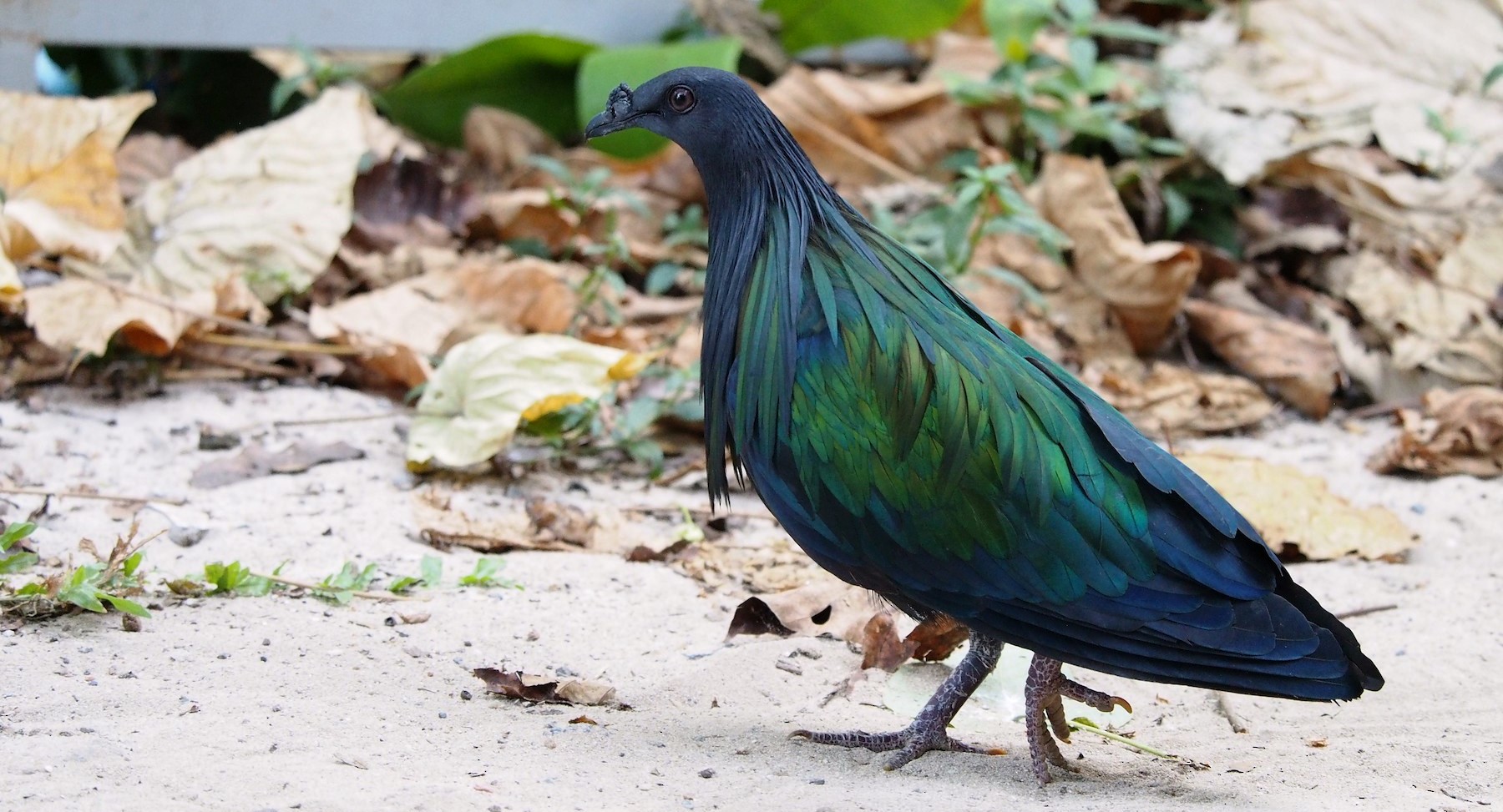
The Enigmatic Nicobar Pigeon: A Symbol of Tropical Splendor
In the azure expanse of the Indian and Pacific Oceans, amidst the secluded isles and coral atolls, roams a bird of remarkable beauty and mystique—the Nicobar Pigeon. With its iridescent plumage and intriguing behavior, this avian species embodies the allure of tropical biodiversity. Let’s explore the captivating world of the Nicobar Pigeon.
A Palette of Colors:
Dressed in a palette reminiscent of a tropical sunrise, the Nicobar Pigeon boasts feathers that shimmer with iridescence. From the deep blues of the sea to the lush greens of the rainforest canopy, its plumage reflects the vibrant hues of its island habitats, earning it the title of one of the world’s most visually stunning birds.
Island Nomads:
Endemic to the remote islands scattered across the Indian and Pacific Oceans, Nicobar Pigeons are adept inhabitants of tropical archipelagos. They traverse dense jungles, rocky coastlines, and mangrove swamps with ease, their presence woven intricately into the fabric of island ecosystems.

Social Yet Solitary:
While often spotted in small flocks, Nicobar Pigeons are predominantly solitary foragers, each bird meticulously exploring its surroundings in search of fruits, seeds, and small invertebrates. Despite their solitary habits, these pigeons maintain social bonds within their flocks, engaging in gentle cooing and displaying hierarchical behaviors.
Hidden Nests, Hidden Gems:
Breeding pairs of Nicobar Pigeons construct their nests amid the dense foliage of their island habitats, carefully hidden from prying eyes. Here, amidst the sheltering branches, they raise their young, their parental care ensuring the next generation’s survival in the midst of lush tropical abundance.
Guardians of Island Biodiversity:
As avid consumers of fruits and seeds, Nicobar Pigeons play a crucial role in the dispersal of plant species across their island homes. Through their dietary habits, they contribute to the regeneration of forests, fostering biodiversity and ecological resilience in these fragile ecosystems.
Conservation Imperatives:
Despite their cultural significance and ecological importance, Nicobar Pigeons face escalating threats from habitat loss, hunting, and habitat degradation. Urgent conservation action is needed to safeguard their island habitats and protect them from exploitation and trade.
Conclusion:
The Nicobar Pigeon stands as a symbol of the untamed beauty and biodiversity of tropical island ecosystems. As custodians of these remote paradises, it is our responsibility to ensure their continued existence and safeguard the natural heritage they represent. In preserving the habitats of the Nicobar Pigeon, we not only protect a species but also uphold the intrinsic value of our planet’s rich and diverse tapestry of life.






